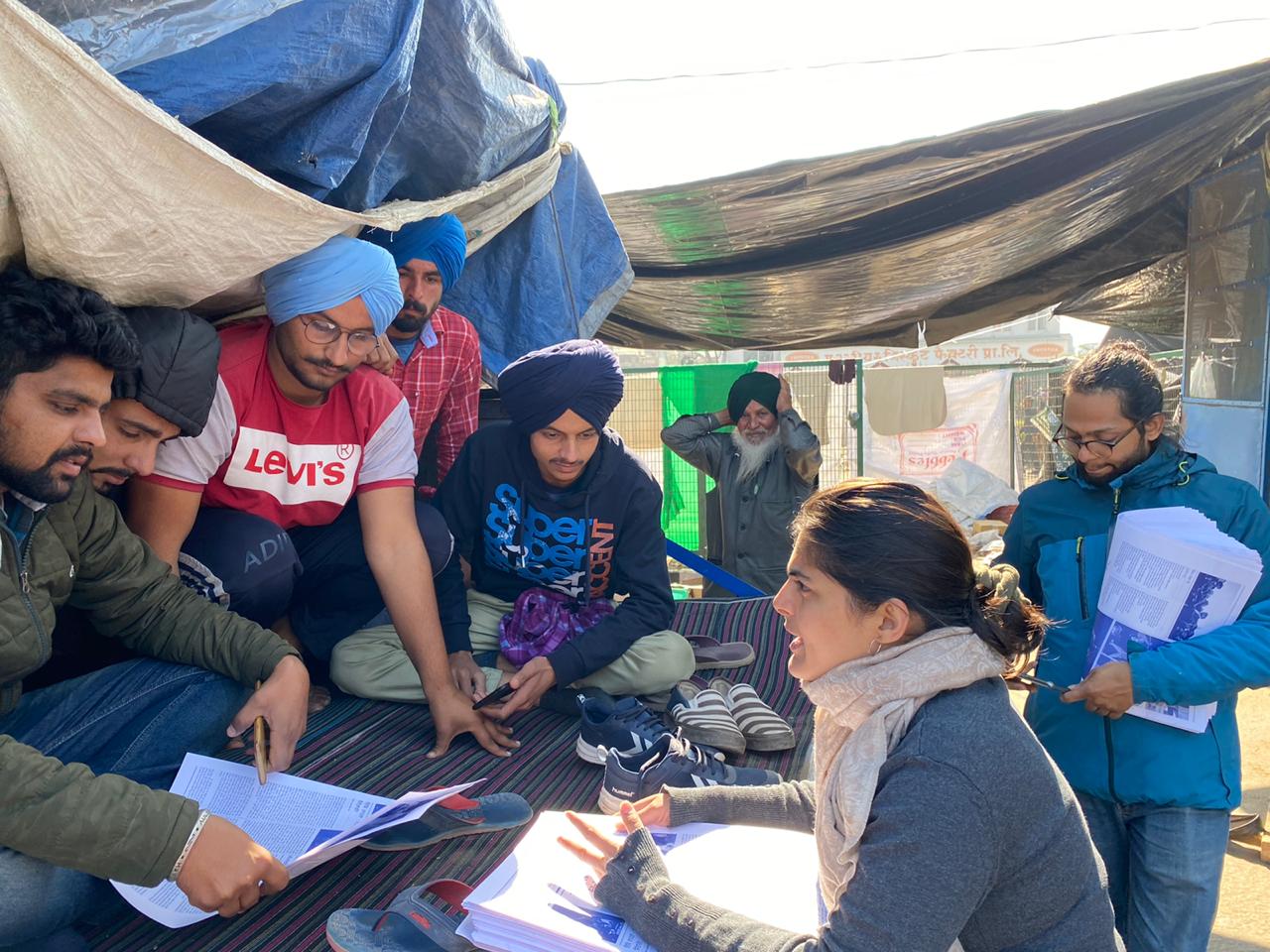The Birth of a Newspaper At Singhu Border
To counter main media biased propaganda
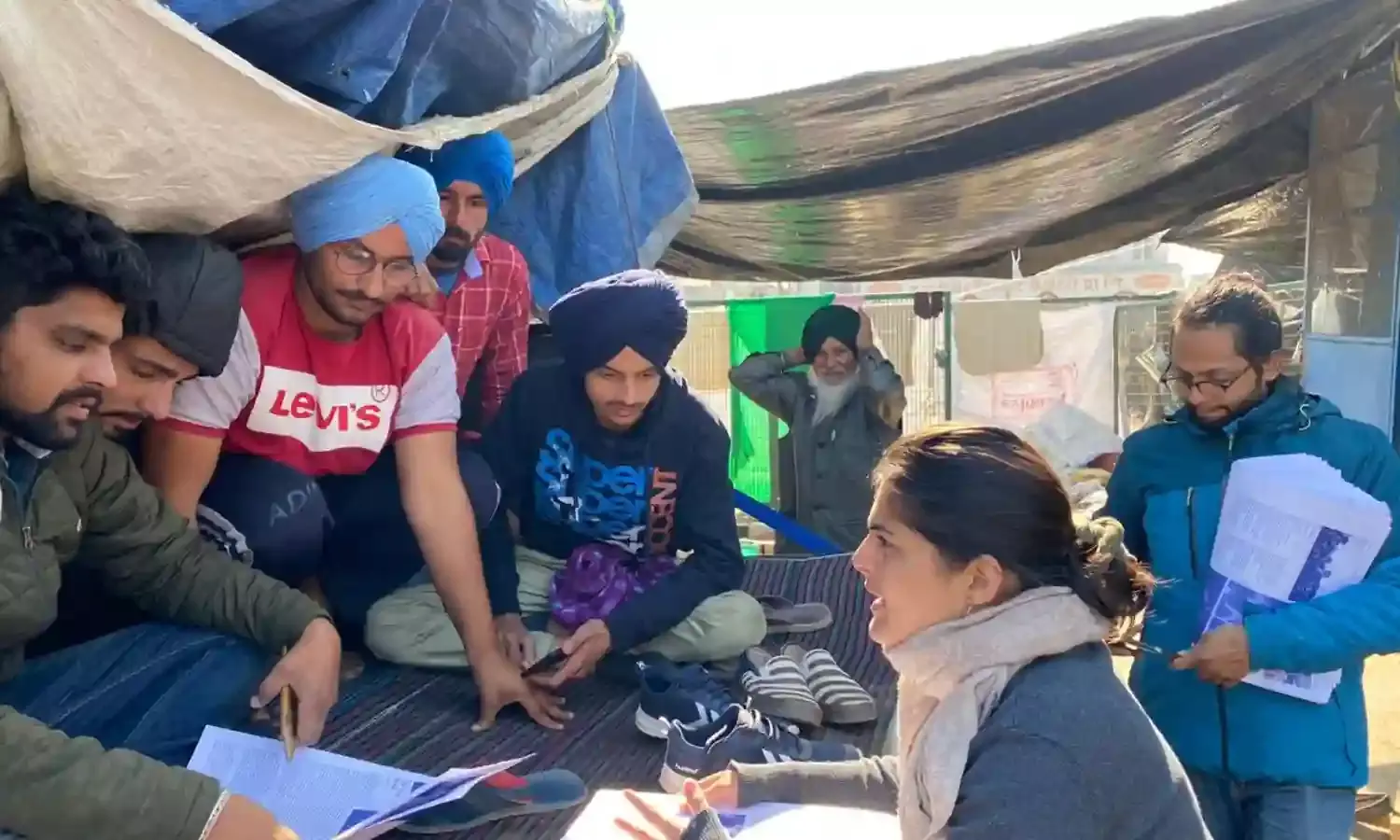
With the second edition of Trolley times already out in print, it has established itself as an effective tool to achieve self reliance in documenting stories and voices from the protest site. The masthead of the second edition has included increased hindi representation. This is done to defy the false narrative propagated by biased media of terming the movement as solely of Punjabi farmers.
“This is an united movement of farmers of India. Different protest sites at five borders of Delhi are not isolated in any way”, explained one of the members of Trolley Times.
This is a people’s movement and Trolley times assume that same spirit. From crowdfunding campaigns for inviting funds,content, distribution, editing, all the tasks were completed through active volunteer participation from people at the borders and across India.
The choice of language has been restricted to Gurmukhi and Hindi since these languages are spoken by most of the people participating at the protest site. Special care has been taken to regularly check the content uploaded by people on the social media portals to avoid misinterpretation and false narratives. Language of the newsletter has been decided to assume a vernacular and simple spirit.
“Farmers speak in simple language and the format of the newsletter conveys the same. Our aim was to create literature that is easy to access for everyone. Hard copies were circulated for in-house consumption at Singhu and other sites, and soft digitally. After the first edition we got special requests from NRIs to also translate it in English which has been made possible by volunteers and can be accessed online”, Surmeet Maavi said.
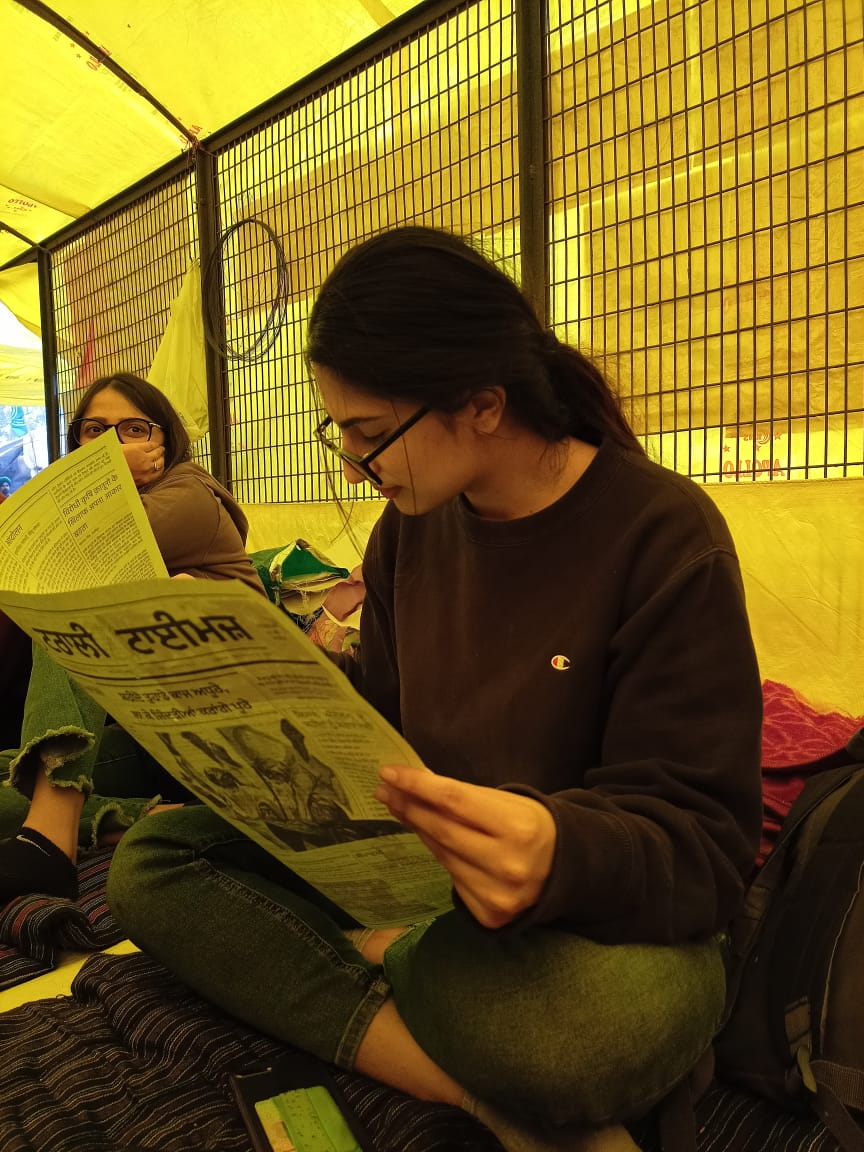
People involved in Trolley times are not youth filled with irresponsible rage but concrete vision. They have been actively involved in social movements and welfare activities back in their native villages. These people did not come together originally just for Trolley times but for social welfare projects such as imparting education to socially disadvantaged communities, setting up libraries and similar ideas.
Gurdeep Dhaliwal from Singhu Border said, “The main stage is very far from several locations on the protest site and we felt a need for in group communication among different groups to further strengthen the movement. It was important to connect different borders and consistently inform people participating in the protest about the developments of the movement, future vision by leaders and stories within the protest. For such a vast movement, being on the same page is crucial.”
With a background in English literature and creative writing, Gurdeep has been documenting visuals from the protest on his instagram handle. He adds, “Trolley times is not a mouthpiece for the entire farmer’s movement but it is our way of supporting the spirit of farmers. Clearly we were not satisfied with the reportage done by mainstream media and this is our way of claiming our narrative.”
This movement is also different in terms of the archival history it is creating. Usually during movements, students assume the frontline. We saw graffiti and installations at various protest sites that created memories and inspiration. In the wake of Covid, students participation is not as much as it was in the movements that happened pre Covid, due to restrictions on commute. Trolley times is creating an alternate archival history by documenting photos, videos,songs, illustrations and stories straight from the heartland of the protest site.
An open online archive https://kisanekta.in/ is also created to allow participation from people across the country. People have been uploading their videos, illustrations, poems, songs, graphic artwork in support of the movement, giving it an inclusive voice. At the end of every day the content is filtered since it’s an automatic archive and it’s not possible to check all the submissions immediately..
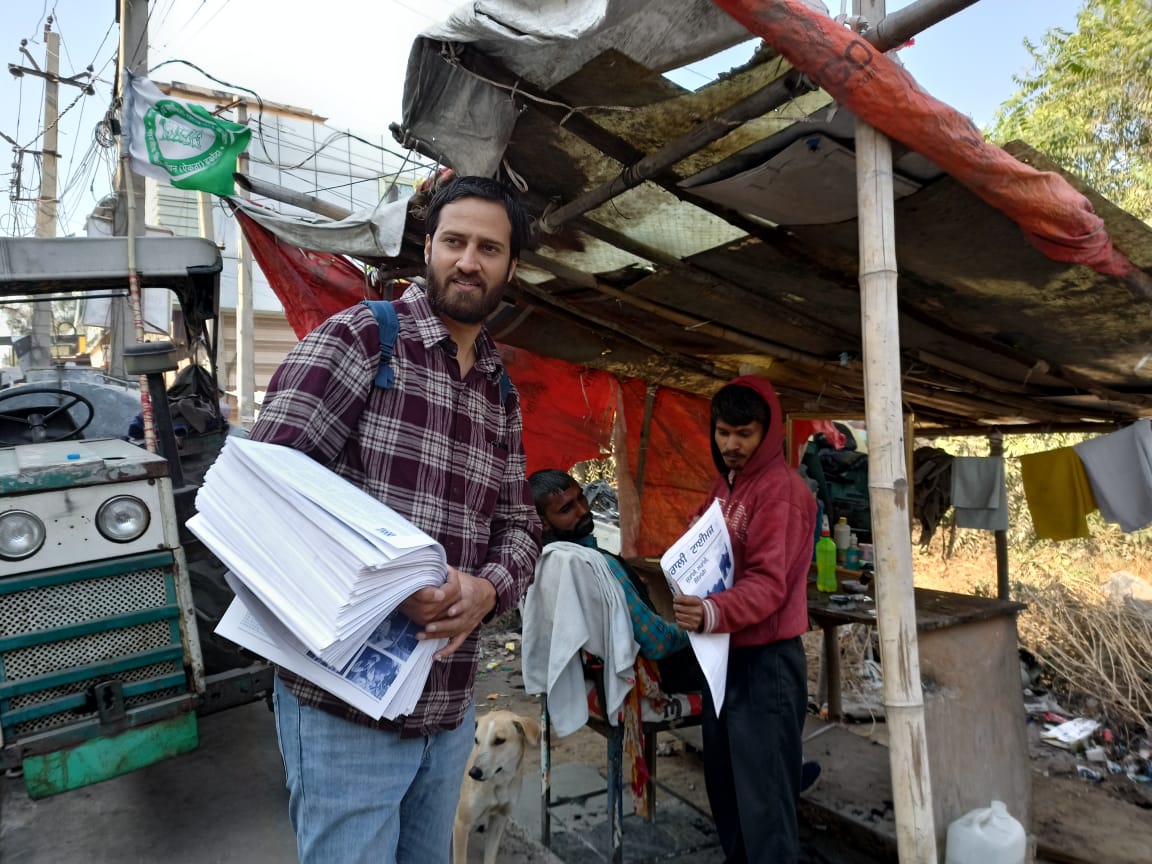
Narinder Bhinder on whose trolley the idea was brought to life has been involved in the protest since the beginning. Earlier in December, his video went viral where he climbed onto a police car, to turn off the water canon which was being blasted at the farmers. Talking about the incident he remembers, “At Punjab-Haryana border, we were stopped by the police and were denied movement into Delhi. At that time, elders with us advised us to comply with police and return to the villages but the youth had already decided that we have to reach Delhi to register our voices.We continued to rely on dialogue but the police attacked us with water cannons when we didn’t budge. Then I decided to climb onto the water cannon and stop it.”
Even after reaching Delhi, he was appalled to witness the treatment meted out to the farmers by the mainstream media. They were soon termed ‘Khalistanis/Terrorists’. This incident made them realize the need for strong in group communication to maintain transparency and authenticity of the movement.
Bhinder adds, “We continue to talk regularly among groups stationed at different borders and remind them to not do or say anything that would weaken the character of the movement. Trolley times is a step to take back this agency of expression. We decided to publish our stories and concerns ourselves to avoid misrepresentation of any kind.”
One of the most peaceful protests of our times is a sight for solidarity and struggle. This is also an opportunity for Punjab youth to breakfree from the image of drug addicts and show this other side that is charged with vision and responsibility.
Surmeet Maavi comes from a family of farmers with no land of their own. A recipient of national award, he said, “Participation from landless farmers in the movement is especially important because we know what it is to lose our lands to debts.” With a background in Mass communications, Trolley times was just a natural instinct. During discussions when everyone would brainstorm on ways to contribute to the movement, Surmeet suggested the idea of Trolley times. Joined by Navkiran Natt, Ajay Paul, Gurdeep, Narinder and other contributors, the idea quickly assumed shape.
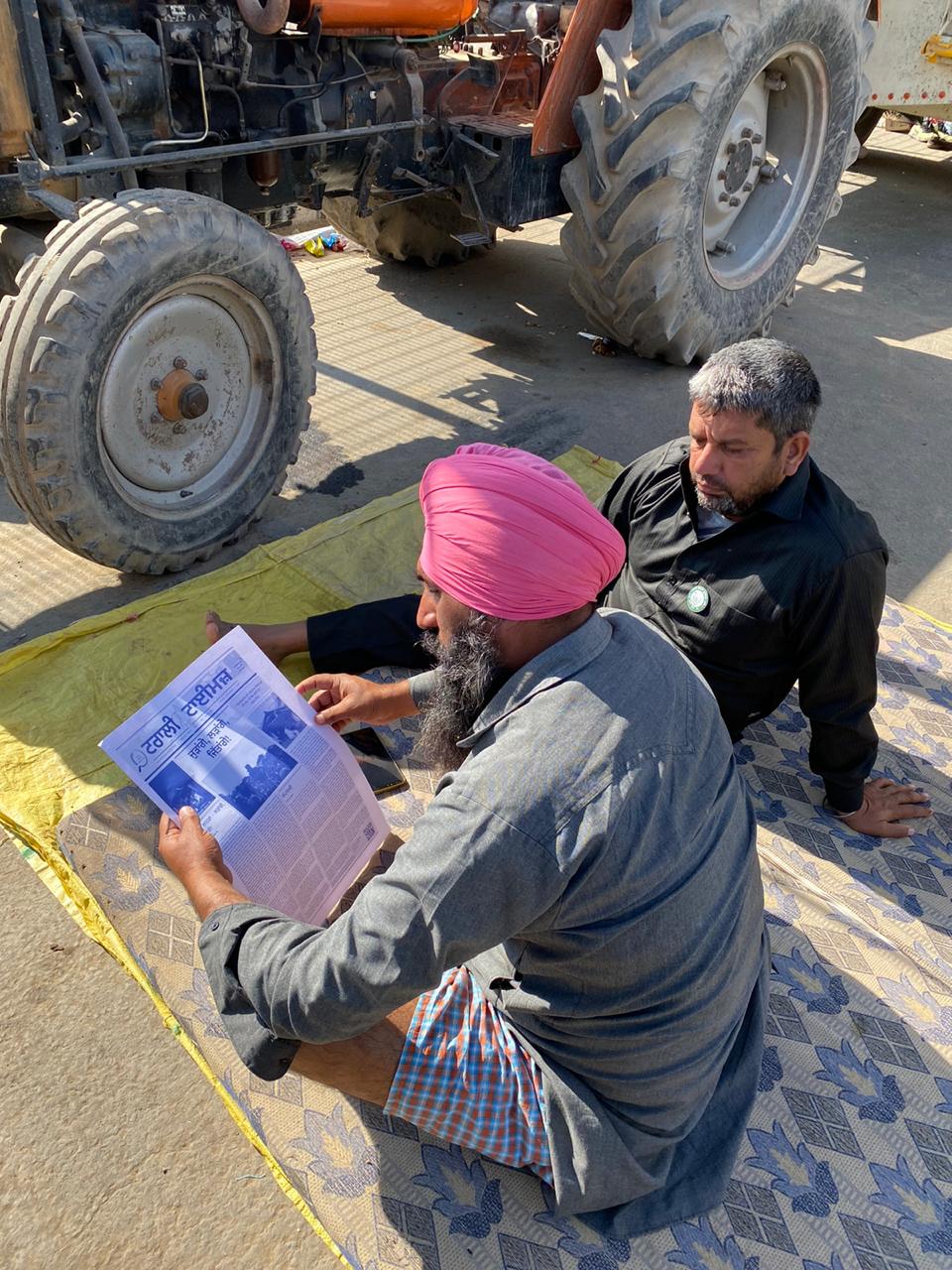
Exploring the hope and vision of Trolley times, Surmeet said, “We did not expect an overwhelming response to our idea that was born during one of the many discussions on trollies that helped us reach here. Farmers have attached their hope with this newsletter that has also increased our responsibility to make sure we stay true to the movement by upholding its democratic and non violent spirit.”
With effective communication strategies such as vibrant instagram pages, youtube channels and a specialised IT cell of their own, farmer’s protest has garnered active support on social media and on site.
